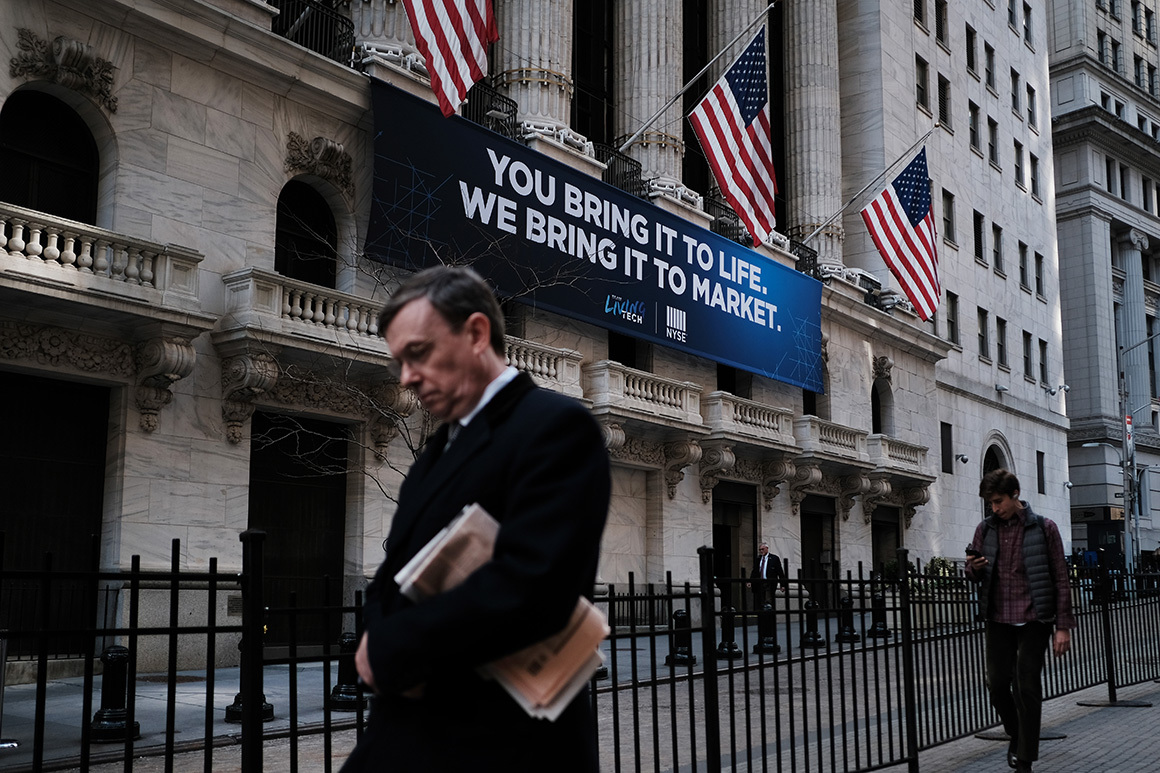
The hope on the part of White House officials is not to avoid a sharp economic slowdown — they all know it is coming — but that the short-term pain from extreme measures will lead to a flattening in the curve of the virus spread. Then economic activity can be made up when the crisis ebbs.
But that will require agreement on a massive package of aid for both individuals and corporations to stave off mass bankruptcies and waves of layoffs. The White House hopes for a V-shaped economic cycle this time: a recession in which growth plunges then sharply recovers as consumers emerge from their bunkers with jobs to go to and money to spend.
Kevin Hassett, the former White House Council of Economic Advisers chairman who remains in contact with Trump and the White House, said in an interview that jobs reports for March and April could show horrific numbers that will force massive congressional action if it has not already occurred by then.
He predicted losses of perhaps over 1 million jobs in coming reports and a spike in the jobless rate. “We really could see the worst jobs reports we’ve ever seen in our history.”
Hassett said he did calculations over the weekend with conservative economist Larry Lindsey showing that the economy could contract by 5 percent in the second quarter, though a swift containment of the virus could lead to a bounce-back in the third quarter. (Goldman Sachs economists also predicted a drop of around 5 percent in economic growth in the second quarter.)
And he noted that infighting between the House and Senate and uncertainty about the next stimulus package from the White House could make matters far worse. The White House is trying to settle on a package that would include a payroll tax suspension and emergency lending facilities, including from the Federal Reserve, and other measures for impacted businesses that would stop short of direct cash “bailouts,” a politically toxic word since the bank rescues of 2008 and 2009.
William Lee, chief economist at the Milken Institute, suggested the United States is headed into what could be the first recession whose length and depth will be determined largely by how effectively Washington responds, both on the fiscal and public health fronts.
“This will be first recession induced by public health policies, and the nature of those public health policies and their effectiveness accelerating the recovery from the virus. And that will determine the course of the depth of the recession.”
Lee said he was certain the second quarter would show a contraction, but that multiple policies, most of which are currently under consideration, could prime the economy to bounce back.
Those policies would include direct aid to corporations slammed by the virus, through loan forbearance and acceptance of late payments. He also suggested credit rating firms would have to take into account the impact of the virus when making ratings changes, including potentially crippling downgrades.
On the consumer side, Lee said supplemental sick pay leave and extended benefits for laid-off workers would be critical along with payments to cover day care. “Our avenues for pushing this stuff out through negative income taxes for households can be easily done. The key thing as that as soon as people feel safe to go out, that they have money in their pockets and they go and spend it.”
Lee said he did not believe in giving free money away to corporations, but that decisions would have to be made about which companies are simply mismanaged and which are suffering directly from the virus. “We have to be generous about getting money out. It’s really important to preserve the transport infrastructure. We can’t have airlines filing for bankruptcy.”
Joel Prakken, chief U.S. economist and IHS Markit, said in a note to clients that the spread of Covid-19 to the U.S. „is causing a sharp contraction in spending on activities that involve travel and congregating in public.” His firm now expects a recession to start in the second quarter, delivering a peak-to-trough decline in GDP of 2.3 percent, with the jobless rate rising to 6 percent by mid-2021.
Goldman Sachs analysts increased their expectations for stimulus action out of Washington. Their base case is to see stimulus worth 1 to 2 percent of GDP in both 2020 and 2021, or roughly $400 billion to $800 billion worth.
White House National Economic Council Director Larry Kudlow said Monday the administration was pursuing at least $800 billion in relief for an economy hit by the crisis.
Source: politico.com
See more here: news365.stream






